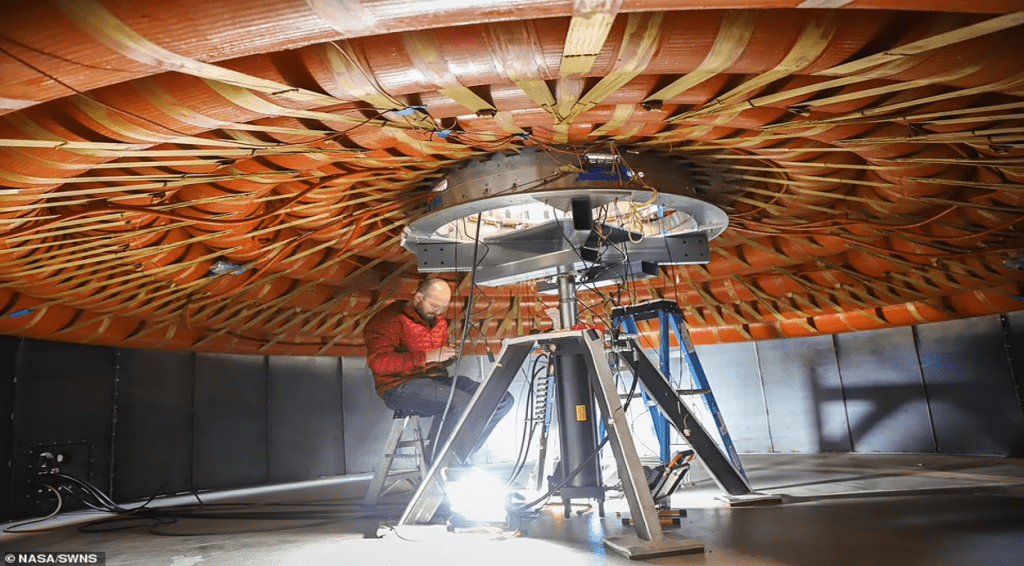This week, the US space agency will launch a giant flying inflatable heat shield into low-Earth orbit.
The Low-Earth Orbit Flight Test of an Inflatable Decelerator, or LOFTID, is set to launch on Nov. 10 as a secondary payload with the National Oceanic and Atmospheric Administration’s Joint Polar Satellite System-2, a weather satellite. When LOFTID reaches orbit, the heat shield will expand and re-enter the Earth’s atmosphere, demonstrating how it could aid payloads in slowing down and surviving re-entry.
The Kahana II will be home to twelve NASA and ULA team members in the Pacific Ocean for the launch. The team will leave port two days before launch to travel to the splashdown ellipse east of Honolulu.
The team’s first goal is to recover LOFTID, a technology that wasn’t meant to float. They’ll then go on to the ejectable data module (EDM), a backup recording of sensor and camera data that will be ejected before splashdown. The EDM can be recovered later because the lemon-shaped device is meant to float and provide GPS data over 30 days.
“We want the flight data – that means mission success,” said Robert Dillman, LOFTID recovery operations lead at NASA’s Langley Research Center in Hampton, Virginia.
“There are data packets being sent during the demonstration and a complete dataset on board and the EDM, but we can get so much more information from looking at the heat shield.”
The researchers are using various technologies to locate the heat shield, which is aided by the fact that LOFTID will broadcast GPS coordinates as it falls. In addition, before LOFTID touches down, a relay of weather balloons will give GPS coverage of the landing ellipse.
To help the team track LOFTID, two infrared cameras will be mounted on the ship. In addition, another team will take pictures of LOFTID from a unique angle in the sky. Finally, a Gulfstream-IV aircraft will be used by NASA’s Scientifically Calibrated In-Flight Pictures (SCIFLI) team to get infrared images of the heat shield for comparison with onboard data.
The SCIFLI team will continuously gather temperature and heating data on the LOFTID thermal protection system to better understand the challenging aerodynamic and aerothermal flying situations.
The ship’s white recovery lights, which can operate for up to four hours, allow the team to navigate towards the heat shield as it approaches LOFTID.
The team will ready LOFTID for removal from the water using either two 30-foot boat hooks or a small rescue boat, depending on the state of the seas.
Four buoys will be attached to the ends of LOFTID’s parachute lines to keep it floating. The water-logged thermal protection system’s weight will be supported by a net when it is lifted aboard the ship using a crane that will be fastened to LOFTID. The team will keep track of the heat shield’s condition as well as its recovery.
The flight inflation mechanism will have ejected the last of the nitrogen before splashdown. On the boat, the heat shield will be re-inflated. The team created a simple design since the inflation mechanism will be submerged in salt water.
The team will gather the EDM once the heat shield has been found, and the ship will dock in around two days. Then, before returning to NASA Langley, the team will conduct another examination once they are back on the ground.
The heat shield, EDM, and post-recovery examination data will help shape upcoming research and commercial uses of NASA’s inflatable heat shield technology, which could one day allow people to set foot on Mars.

